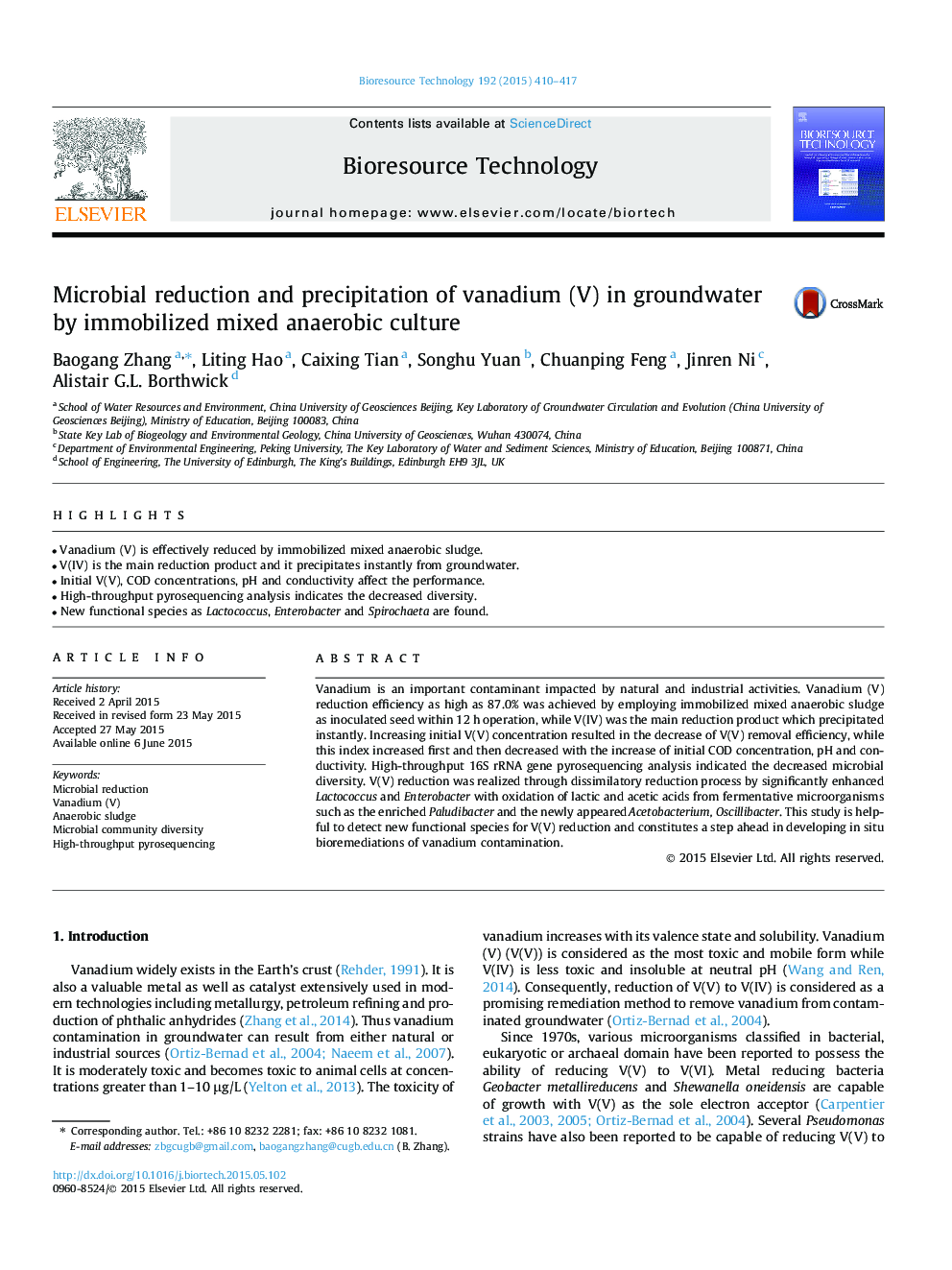| Article ID | Journal | Published Year | Pages | File Type |
|---|---|---|---|---|
| 7074226 | Bioresource Technology | 2015 | 8 Pages |
Abstract
Vanadium is an important contaminant impacted by natural and industrial activities. Vanadium (V) reduction efficiency as high as 87.0% was achieved by employing immobilized mixed anaerobic sludge as inoculated seed within 12Â h operation, while V(IV) was the main reduction product which precipitated instantly. Increasing initial V(V) concentration resulted in the decrease of V(V) removal efficiency, while this index increased first and then decreased with the increase of initial COD concentration, pH and conductivity. High-throughput 16S rRNA gene pyrosequencing analysis indicated the decreased microbial diversity. V(V) reduction was realized through dissimilatory reduction process by significantly enhanced Lactococcus and Enterobacter with oxidation of lactic and acetic acids from fermentative microorganisms such as the enriched Paludibacter and the newly appeared Acetobacterium, Oscillibacter. This study is helpful to detect new functional species for V(V) reduction and constitutes a step ahead in developing in situ bioremediations of vanadium contamination.
Keywords
Related Topics
Physical Sciences and Engineering
Chemical Engineering
Process Chemistry and Technology
Authors
Baogang Zhang, Liting Hao, Caixing Tian, Songhu Yuan, Chuanping Feng, Jinren Ni, Alistair G.L. Borthwick,
